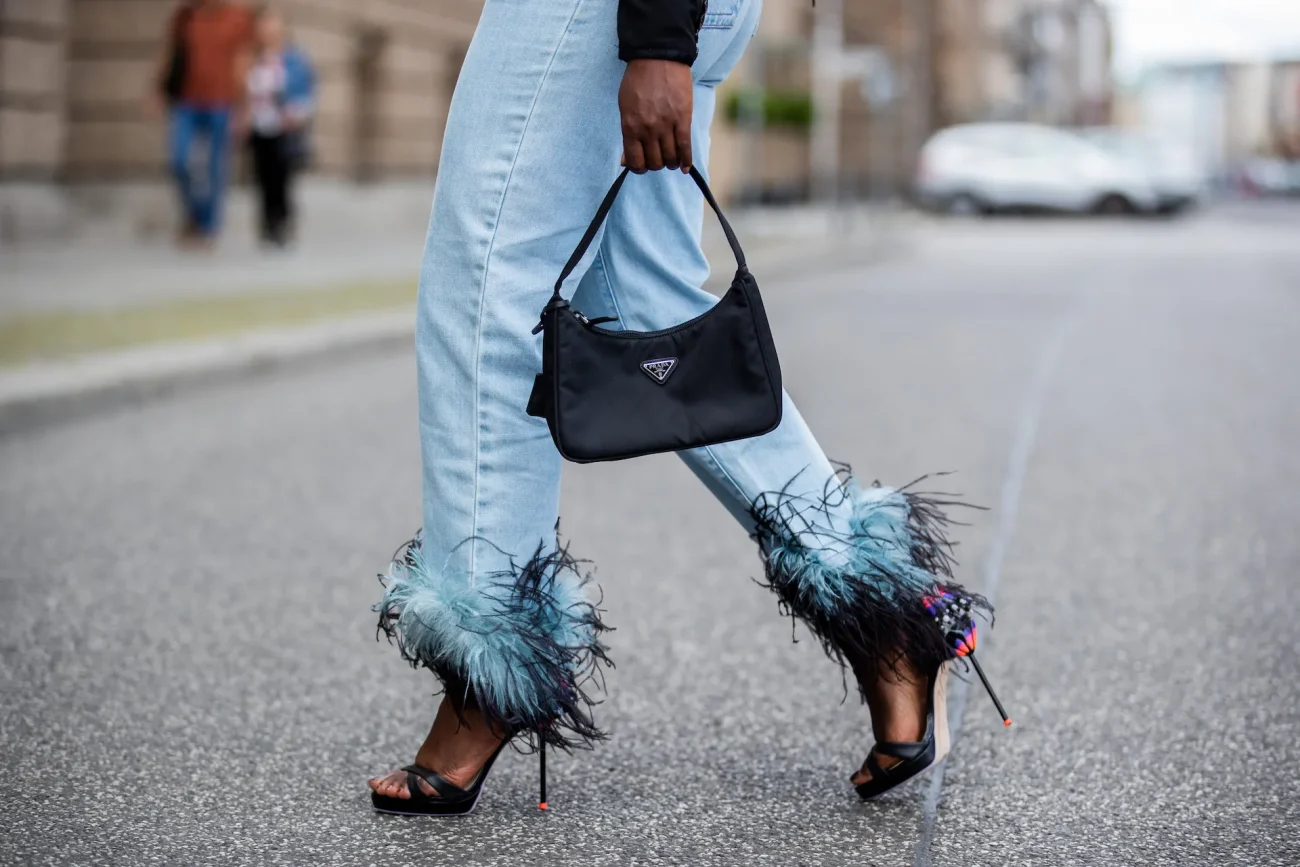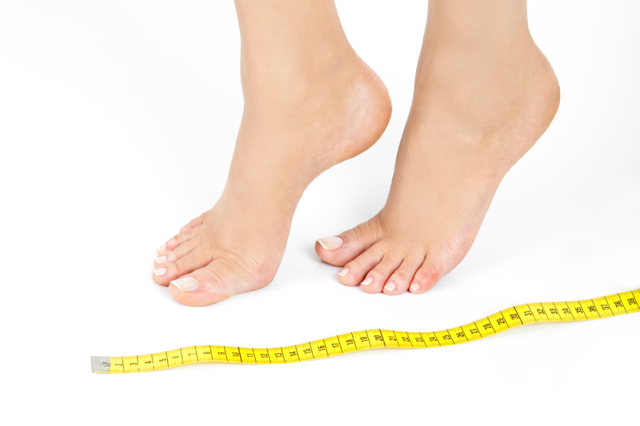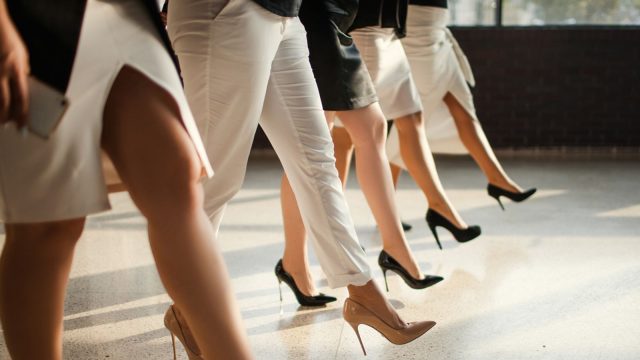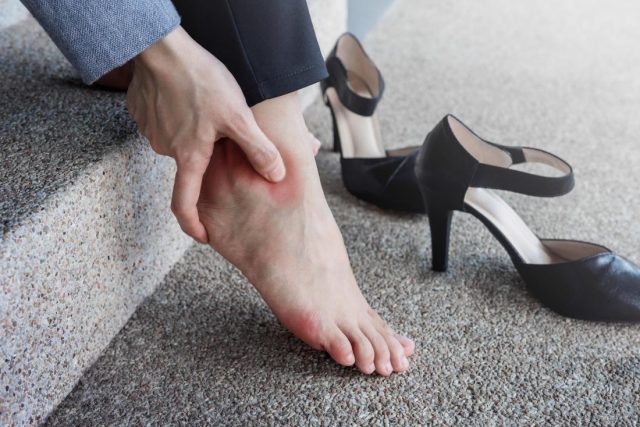
Some people believe that higher heels are better. Others would much rather wear the same pair of black kitten heels than a pair of stilettos. It can’t hurt to have some advice on how to make heels less painful whether you enjoy wearing heels or not since you may find yourself having to wear them at some point. It’s not fun to endure pain for fashion, but fortunately there are some ways to add that little depth to your attire without tripping back with bloody blisters and sore arches.
Top celebrities and models make it seem like walking in heels is like taking a walk in the park. But even the biggest celebrities train and have many tricks up their sleeves. The most fashionable celebrities like the Kardashians, Rihanna and even Marylin Monroe walk in heels every day. Check out Slingo.com to see who are the most fashionable celebrities are.
If worn improperly, high heels can alter how your small foot muscles contract and cause overuse syndrome. Overuse syndrome may result in discomfort and even tearing. Additionally, wearing uncomfortable heels can cause calf, knee, and lower back pain.
There should be a simple fix to make wearing high heels a little bit more bearable, whether you recently purchased a shoes that are sadly uncomfy or that you have a favorite that you can’t wear for more than a few hours. Here are ten suggestions for improving the comfort of walking in high heels.
Size Your Heels Properly

Simply said, the shoe must fit your foot. When purchasing a shoe, it’s important to ensure that the longest toe is not too close to the end. If you’re going shoe shopping, wait until your feet are bloated from walking all day. Also, have a look at your feet’s breadth. There are a lot of ladies with large feet who have to squeeze their feet into tight shoes. Bone alterations and damage may lead to bunions, neuromas, and hammertoes if you don’t take care of your feet.
Your feet will thank you later if you buy shoes that are neither too little nor too large. It’s always riskier to go about with shoes that don’t fit properly.
1. Breaking In
Breaking in your heels at home is a must before heading out on the town. Instead of wearing shoes all day, keep your feet warm with socks or shoe stretchers at home.
2. Leather Over Synthetic
Consider at the material your heels are made of before you purchase them. Make sure your shoes are made of leather, rather than synthetic, so that they can expand with your feet. Unlike other materials, leather is a supple and pliable one. Products made of synthetic materials are often more rigid and have a plastic-like feel to them.
3. Insoles
When the insole is well-cushioned, heels are substantially less unpleasant to walk in. This offers comfort and shock absorption in the ball region during walking. Memory foam is the ideal material to use for these insole cushions. This foam allows you to customize your insoles to precisely suit the shape of your foot.
4. Trim The Heels

Getting the heel trimmed could help you walk more comfortably in a pair of shoes you love. Visit a shoe repair shop and request that they examine the shoe. Even if they just trim a few millimeters off the shoe’s length, it might make a big impact in how it performs.
5. Practice Walking In Heels
The way you stride in heels and in sneakers should never be the same thing at the same moment. When you walk with the proper form, you may reduce the stress and strain on your muscles and joints. Keep your back straight, walk with your core muscles engaged, and land on the outside edge of your heel and toe-off with each stride.
6. Use Patroleum Jelly or Stick Deoderant
Apply a little amount of deodorant or petroleum jelly on your Achilles heel may prevent the formation of blisters. As a protective layer, the deodorant functions as a buffer, preventing too much friction, according to specialists.
7. Moleskin For Your Feet
Protective moleskin may be applied to parts of the foot that are prone to friction. Use it to target specific areas of pain by cutting it to the desired size. The calf, knee and back discomfort caused by posture alterations induced by wearing heels will not be alleviated by this.
8. Rest

On a night out, wearing high heels won’t have a long-term effect on your health. However, if you’re in high heels all day, every day, you may want to take a break. Changing shoes during the day is advised by the professional. “You should only wear heels for short periods of time,” advises the author.
9. Athletic Tape
Experts recommend taping the 3rd and 4th toes of each foot together to relieve discomfort in the ball of the foot. Keep these two toes tied together with Athletic Tape to avoid cramping and numbness.
10. Wanna Stand Tall? Use Platforms
If you wear heels only for the increased height, you may want to think about switching to a pair of platforms instead. The platform’s purpose is to shift some of the weight away from the heel and onto the ball itself. “The more comfortable you’ll be standing on the platform, the higher the better.”
Can Wearing Heels Often Be Bad?
Wearing high heels increases your chances of suffering an ankle injury. Some muscles have been overstretched as a result of this. Other muscles may be shortened as needed. As a result of this, your knees, hips, and back will be in agony.
It is not unusual for the Achilles tendon to thicken if you often wear high heels, and the ligament beneath your first toe’s proximal joint might be injured.
Despite the fact that thickening a tendon may seem like a good thing, let’s take a closer look at why this happens because of your footwear.
Studies showed that those who wear high heel shoes often had larger and stiffer Achilles tendons in a 2010 research. Those who wore flats frequently had a tendon length that was comparable to women who wore heels. Unfortunately, ladies who wore heels all the time had Achilles tendon shortening because the tendon did not expand to accommodate the shorter calf muscle.
Regular stretching of your toes, knees, and other joints might help you prevent this condition. Consult with your physiotherapist if you’re already feeling a lot of discomfort when walking.